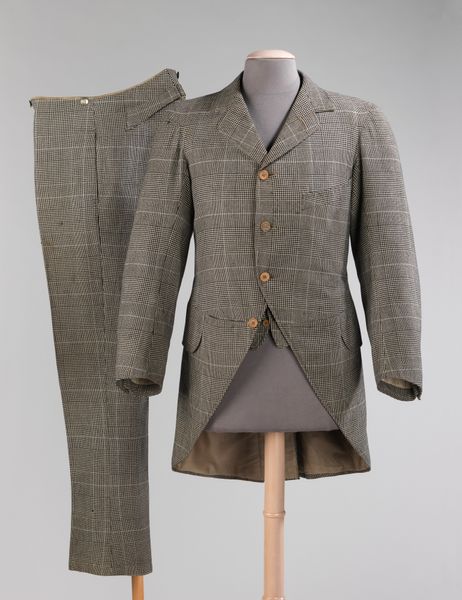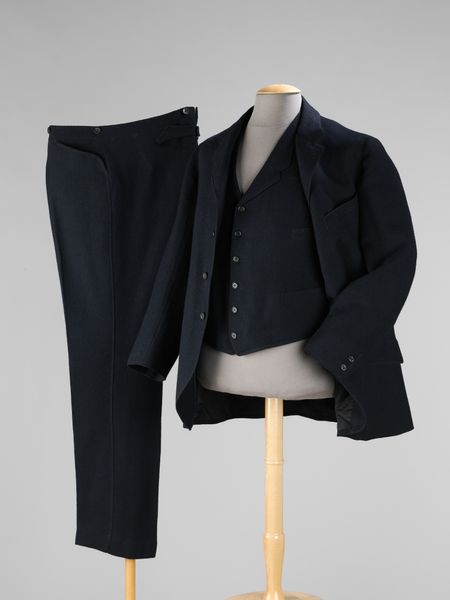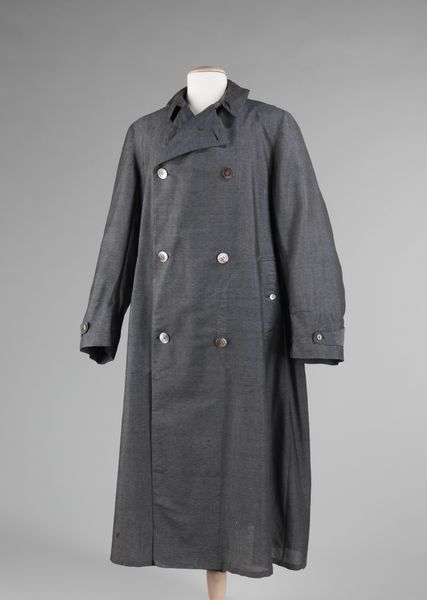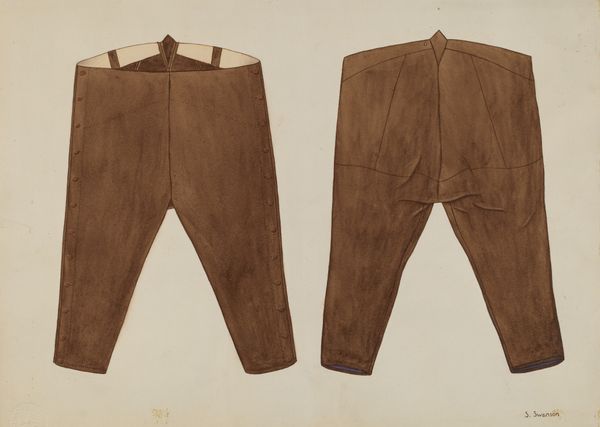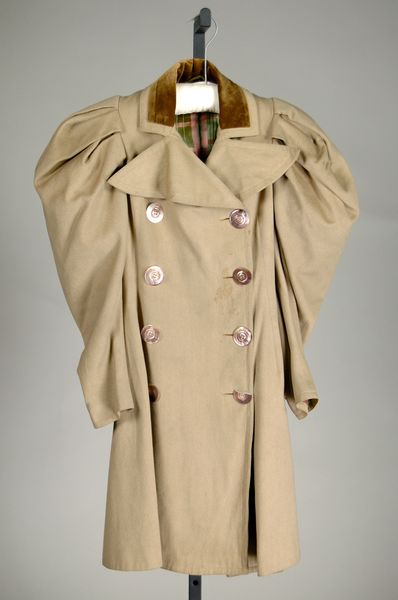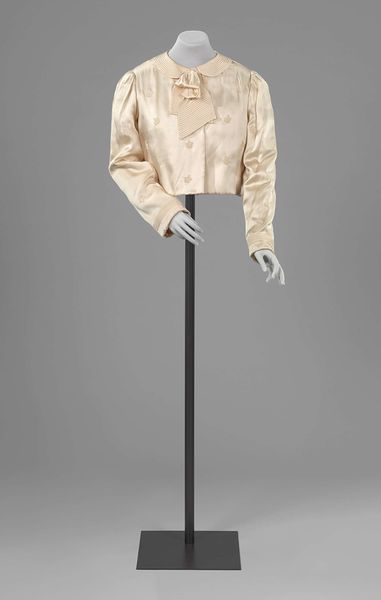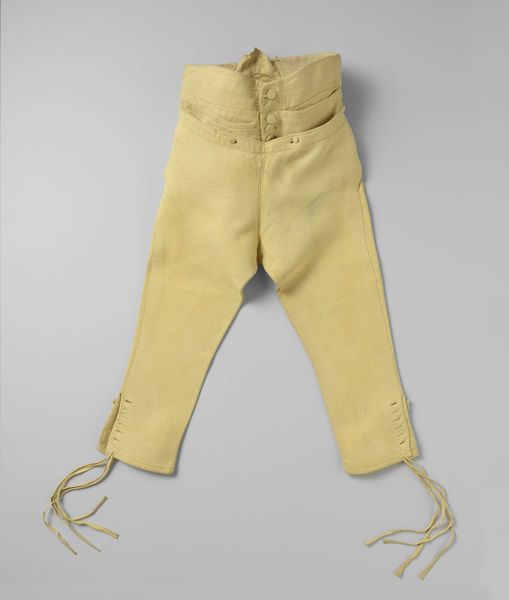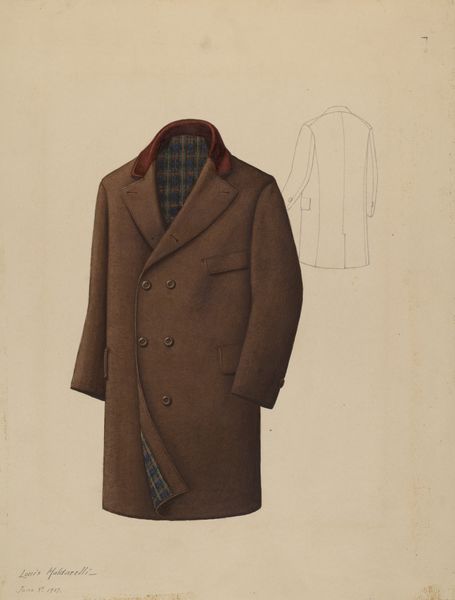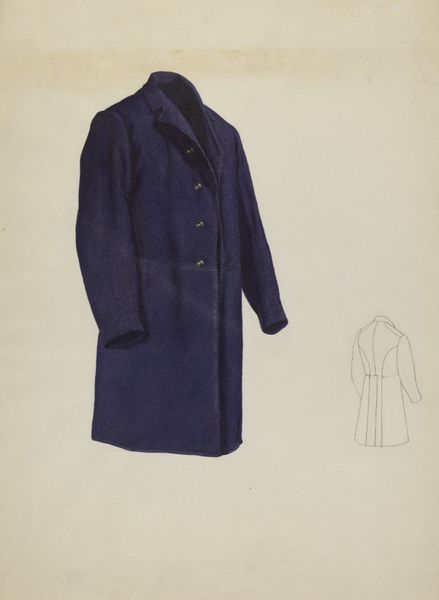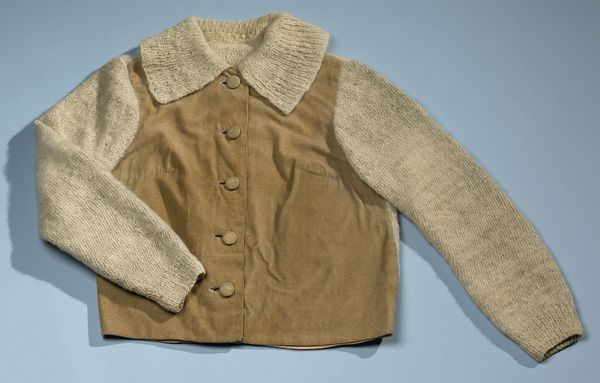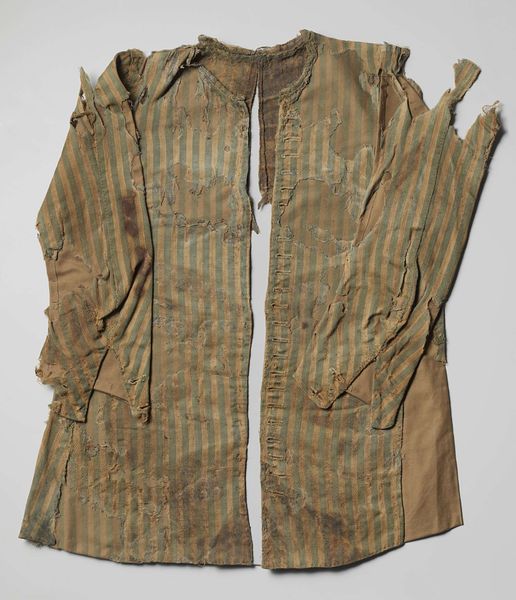
Copyright: Public Domain
Curator: Here we have a turn-of-the-century “Suit,” made around 1898 to 1902, currently residing in the Metropolitan Museum of Art. Editor: My first thought is one of utilitarianism; that striped fabric reminds me of work clothes. It’s a very sober palette. Curator: Indeed. The textile itself carries many layers of symbolism. Consider that stripes, throughout much of Western history, have often been used to denote marginality, transgression, or even social exclusion. Editor: Precisely! Stripes are unstable. Their cultural implications shift dramatically depending on context. It can even be related to gender. This tailored set with it's almost pyjama-like fabric gives the male figure a domestic softness we're not used to seeing in these period pieces. How subversive to hint to that in that period. Curator: In some cultures, striped garments were associated with clowns, convicts, or servants—categories occupying ambiguous social positions. The stripes could signal a break from social norms, making an individual visible precisely as "other." Editor: Yes, that’s fascinating when thinking about this garment! Considering how codified social status was during the time in which this suit was fabricated, I can imagine wearing it made quite a statement. I wonder if there was even a playful poke at notions of luxury and privilege involved. Curator: And what's really exciting is how fashion takes this idea on and continues to evolve. This is where my perspective comes into play; this simple vertical striped pattern speaks of more than just form and fashion—but of an undercurrent through all of art, life, and identity. Editor: I agree. Thinking about its significance gives me chills, especially how such an understated design detail carries the weight of these stories. I guess seeing that suit on that mannequin now reminds me not of who we were then, but where we can push through to redefine the symbols and clothing we put on today.
Comments
No comments
Be the first to comment and join the conversation on the ultimate creative platform.
